Wednesday, 3 December 2025
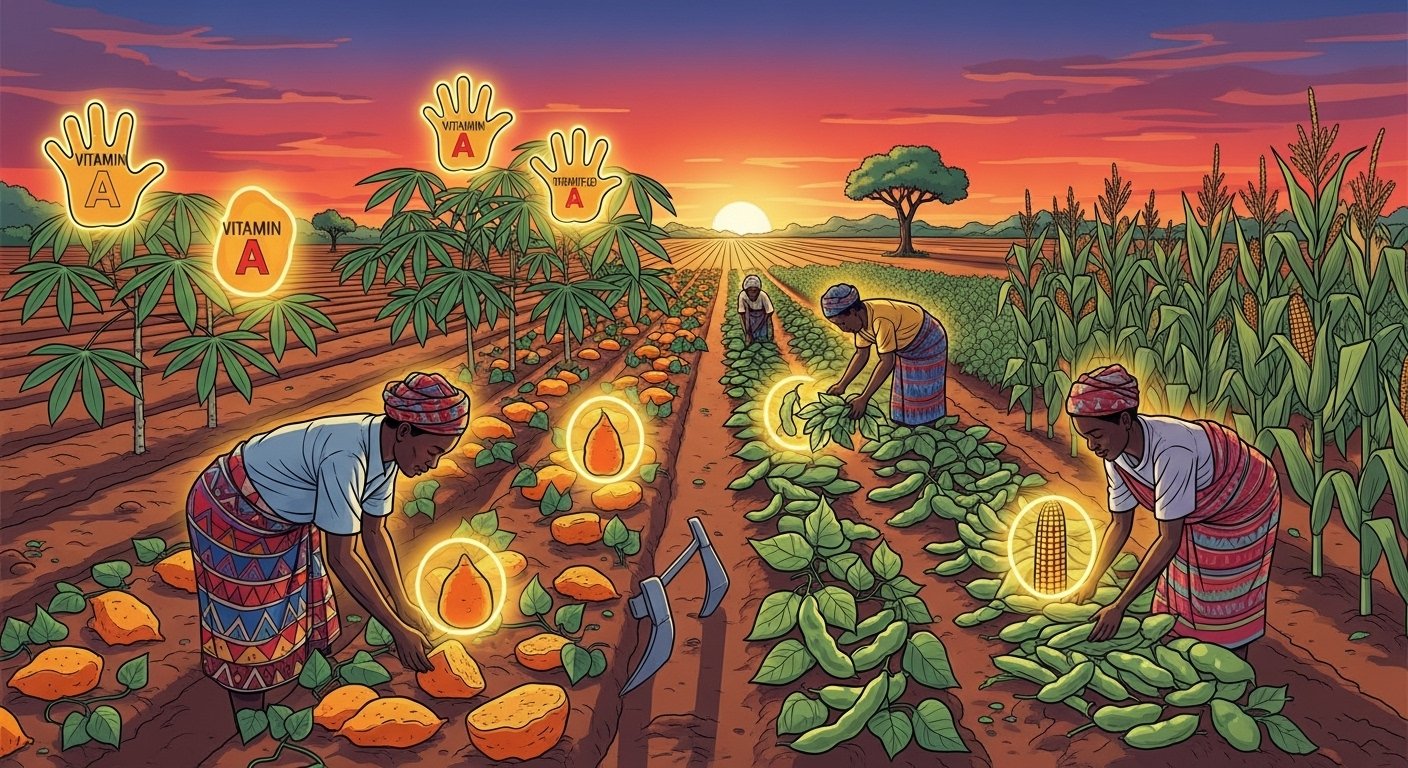

In this Exclusive AgroSpectrum Interview, Prof. Ademola Adenle, PhD (Nottingham), MPP (Oxon)—Senior Special Adviser on Agricultural Innovation at Nigeria’s Federal Ministry of Agriculture and Food Security, and the inaugural laureate of the TWAS–M S Swaminathan Award for Food and Peace—articulates a bold vision for science-driven agricultural transformation. He underscores the pivotal role of climate-resilient and biofortified crops in combating hunger and malnutrition, while insisting that true impact lies in farmer-led adoption and participatory systems. Prof. Adenle highlights how genomic tools, AI, and precision breeding are redefining crop science in Africa, but cautions that sustained progress requires cohesive Pan-African policies and inclusive engagement with farming communities. Above all, he emphasizes that resilient, nutritious, and locally adapted food systems are not just instruments of food security, but essential foundations for peace, stability, and prosperity across Africa.
You’ve been honored with the MS Swaminathan Award for Food and Peace—an accolade that celebrates scientific innovation in service of humanity. What is the big-picture vision that drives your work on high-yielding, climate-resilient, and fortified crops?
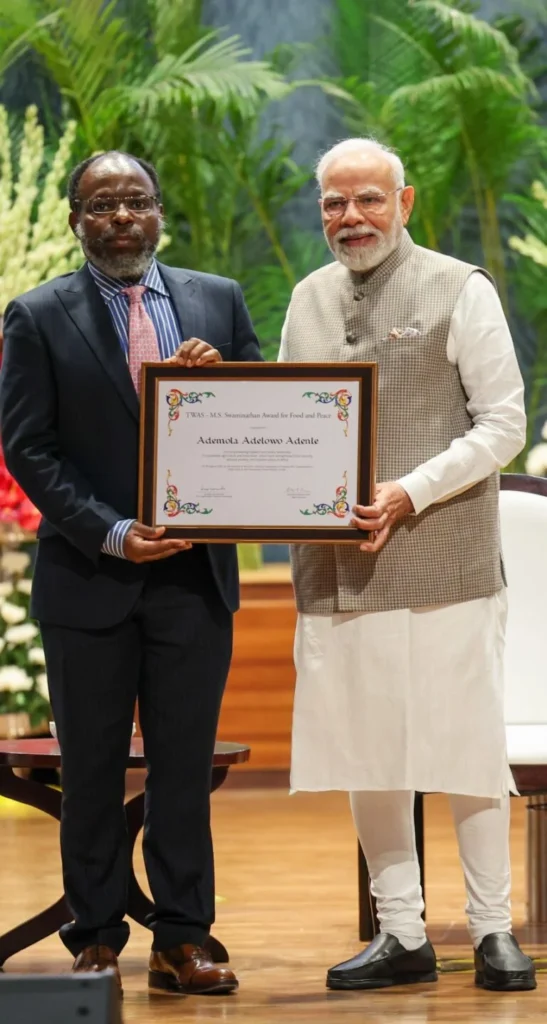
As the first recipient of the inaugural World Academy of Sciences and Swaminathan Award for Food and Peace, I am deeply honored and grateful for this recognition. I have no doubt that the jury carefully examined my research at the intersection of the natural and social sciences, where science and innovation play a critical role in addressing food insecurity, malnutrition, poverty, and ultimately fostering peace.
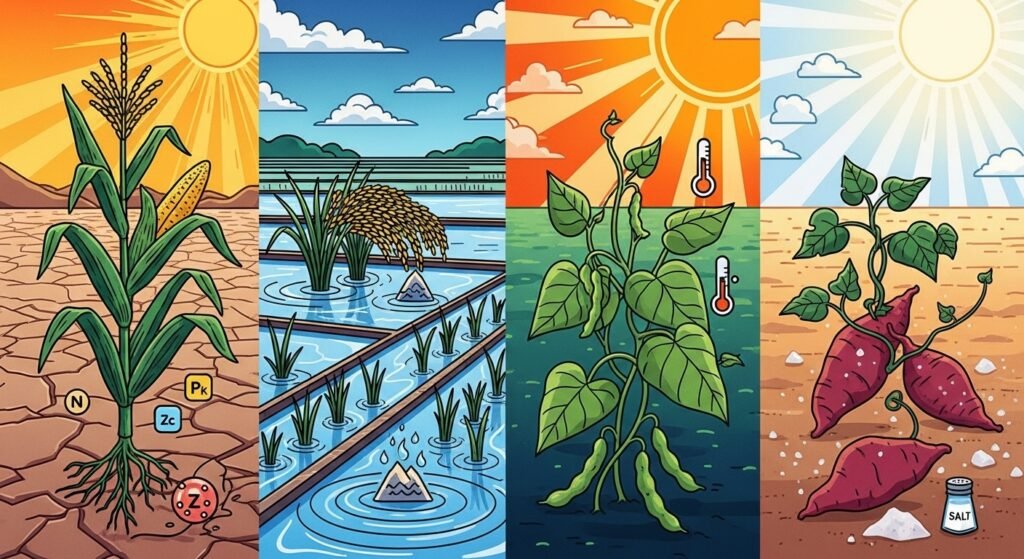
My work is particularly significant in Africa, where food insecurity breeds desperation, malnutrition fuels poverty, and chronic hunger can lead to unrest. Yet, when science and innovation are linked to local action, meaningful change begins to take root. This underscores the urgent need to develop high-yielding, climate-resilient, and fortified crops to tackle low productivity, drought, and nutrition-related diseases in developing regions, including African countries.
In this regard, I led the largest study in the history of GM agriculture in Africa. I have long believed that GM technology could help address part of these challenges, especially by developing crops tailored to local needs. However, the failure to meaningfully engage local stakeholders has often hindered progress in achieving the desired outcomes.
Nigeria faces extreme weather patterns from droughts in the north to floods in the south. How do you see crop science evolving to not just survive these conditions but thrive in them?
Nigeria’s agriculture sits at the frontline of climate change, facing recurring droughts in the north and floods in the south, both of which threaten food security and rural livelihoods. Crop science must evolve not just to help farmers survive these shocks, but to enable them to thrive despite them. This means intensifying research and development in climate-resilient crops such as maize, rice, sorghum, and millet that are capable of withstanding these extreme conditions while maintaining high yields and nutritional quality.
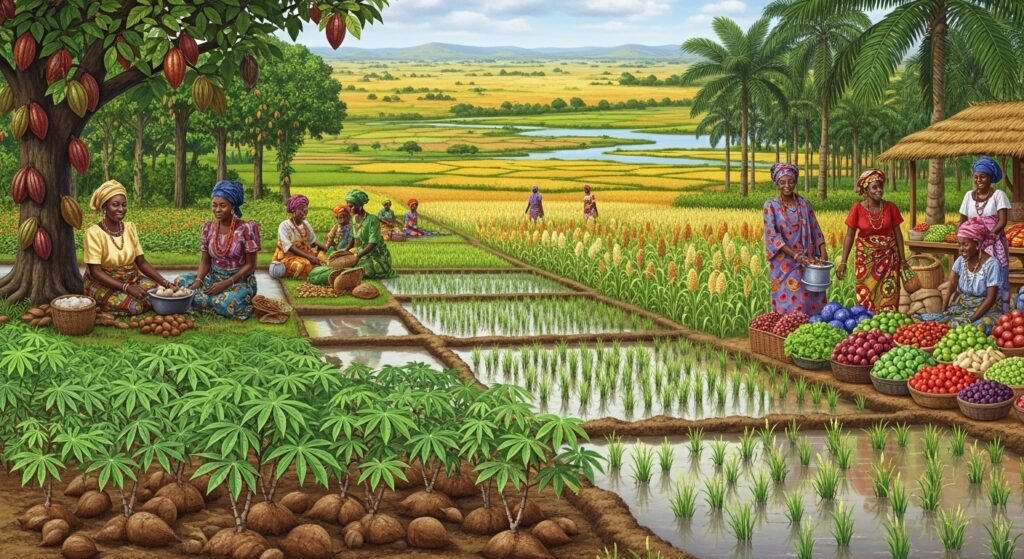
To achieve this, Nigeria needs sustained investment in crop science, with strong collaboration between government, local scientists, and farmers. Developing locally adapted varieties that combine resilience with productivity is critical. Equally important is ensuring that farmers can access and adopt these innovations through effective extension systems, supportive policies, and market linkages.
If approached strategically, crop science can transform Nigeria’s vulnerability into resilience, building an agricultural system that not only endures climate shocks but also drives improved incomes, nutrition, and livelihoods nationwide.
Biofortification has been called the “silent revolution” in public health. How do you design crops that are both nutrient-rich and culturally acceptable to the communities that grow and consume them?
The consumption of vegetables, legumes, and fruits is one of the most sustainable ways to reduce and control micronutrient deficiencies in resource-poor communities. Indigenous vegetables, in particular, are not only rich in micronutrients but also possess other desirable traits. They are often easier to grow, resistant to pests and diseases, and well-suited to local tastes.
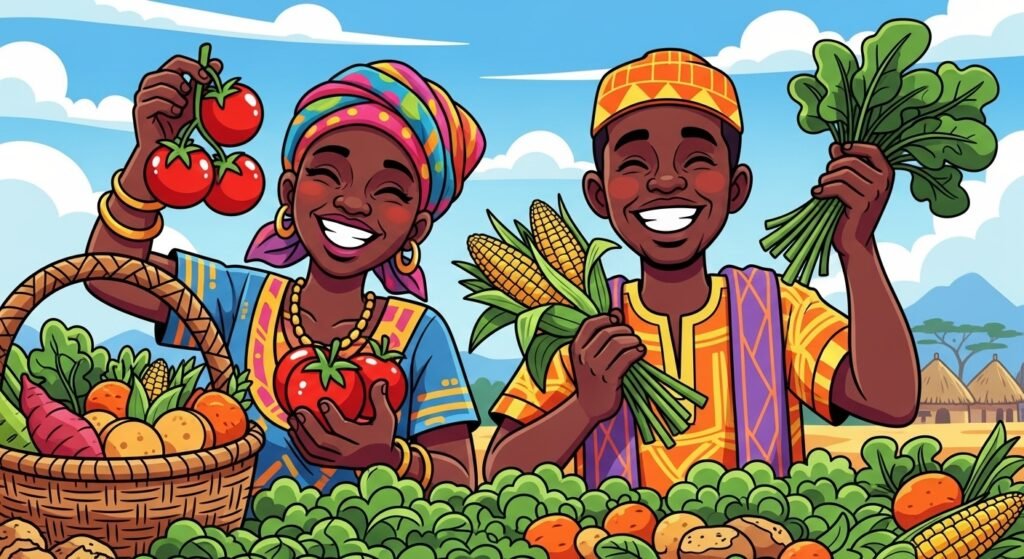
However, in many countries, including India and Nigeria, indigenous crops are at risk of extinction as they are increasingly replaced by high-yielding commercial varieties. Once an indigenous variety is lost, it cannot be recovered, underscoring the urgent need for preservation.
During my award ceremony, I had the opportunity to engage with the Indian Council of Agricultural Research (ICAR) and the National Bureau for Plant Genetic Resources (NBPGR). I learned that NBPGR is not only conducting research on indigenous crops but also conserving tens of thousands of germplasm varieties across the country. In contrast, Nigeria’s efforts to conserve nutrient-rich and culturally significant germplasm remain limited. Nigeria can learn from India’s model, where designated institutes are mandated to conserve different crops through regional gene banks.
In addition, developing countries should actively promote biofortified crops, particularly local varieties, to address micronutrient deficiencies and improve vitamin intake. This can only be achieved through stronger collaboration between scientists, policymakers, and local farmers to ensure that improved varieties remain both nutritionally beneficial and culturally acceptable.
Many breakthrough agricultural technologies fail to reach smallholder farmers at scale. What’s your blueprint for bridging the gap between innovation and adoption at the grassroots level ?
Understanding local farmers’ varieties is essential for the successful adoption of new agricultural technologies. Many underinvested crops in Sub-Saharan Africa (SSA) have lower adoption rates compared to Asia and South America, largely because they remain traditional low-yielding varieties. However, adoption rates vary significantly from region to region and country to country. For instance, the adoption of improved groundnut varieties in Tanzania is only 19 per cent—about half the rate observed in Malawi, particularly for modern varieties.
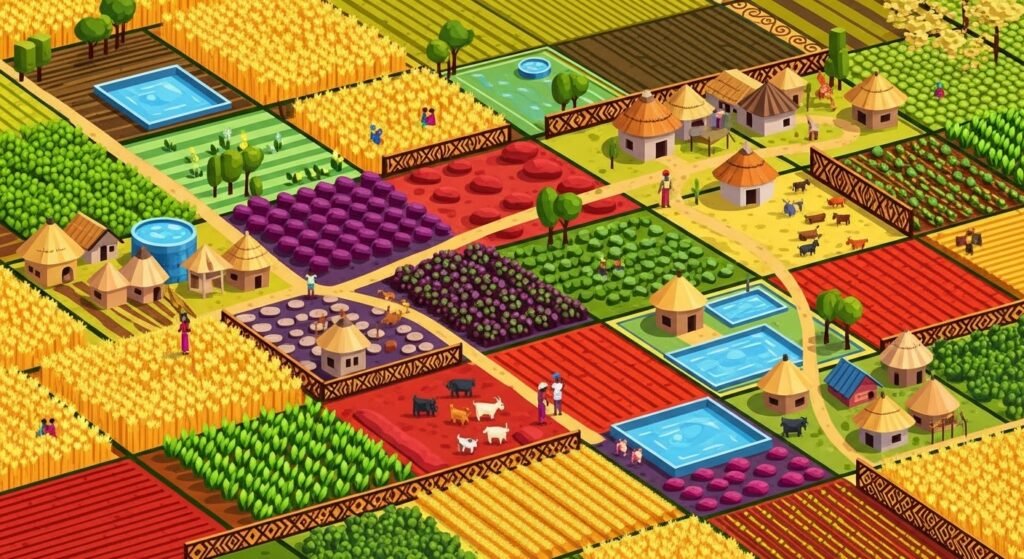
Farmers seeking improved varieties often face limited options due to the narrow portfolio supported by agricultural input delivery agencies. Addressing this challenge requires targeted research and development programmes that help farmers upgrade underinvested crops, with strong involvement of local researchers.
Evidence shows that high adoption rates of new agri-innovations are possible when delivered through farmer-led systems, underscoring their effectiveness. To bridge the gap between innovation and grassroots adoption, it is vital to promote participatory and inclusive training approaches such as farmer field schools and result demonstrations. These methods, designed to align with adult education, enhance proximity between trainers and learners, making knowledge transfer more effective.
Accordingly, farmer-led knowledge dissemination systems should prioritise in-person training sessions supported by hands-on demonstrations of new technologies in target communities
How are tools like genomic sequencing, AI-based climate modeling, and precision breeding transforming your crop development process—and what’s the next frontier ?
Fourth Industrial Revolution technologies—including gene editing, synthetic biology, smart irrigation, artificial intelligence (AI), and precision breeding, are emerging as promising solutions for the future of agriculture. These innovations will be critical in developing high-yielding crop varieties with superior adaptability to changing and unpredictable climates. Such advances are imperative not only for ensuring food security, but also for sustaining biomass production and preserving ecosystem services.
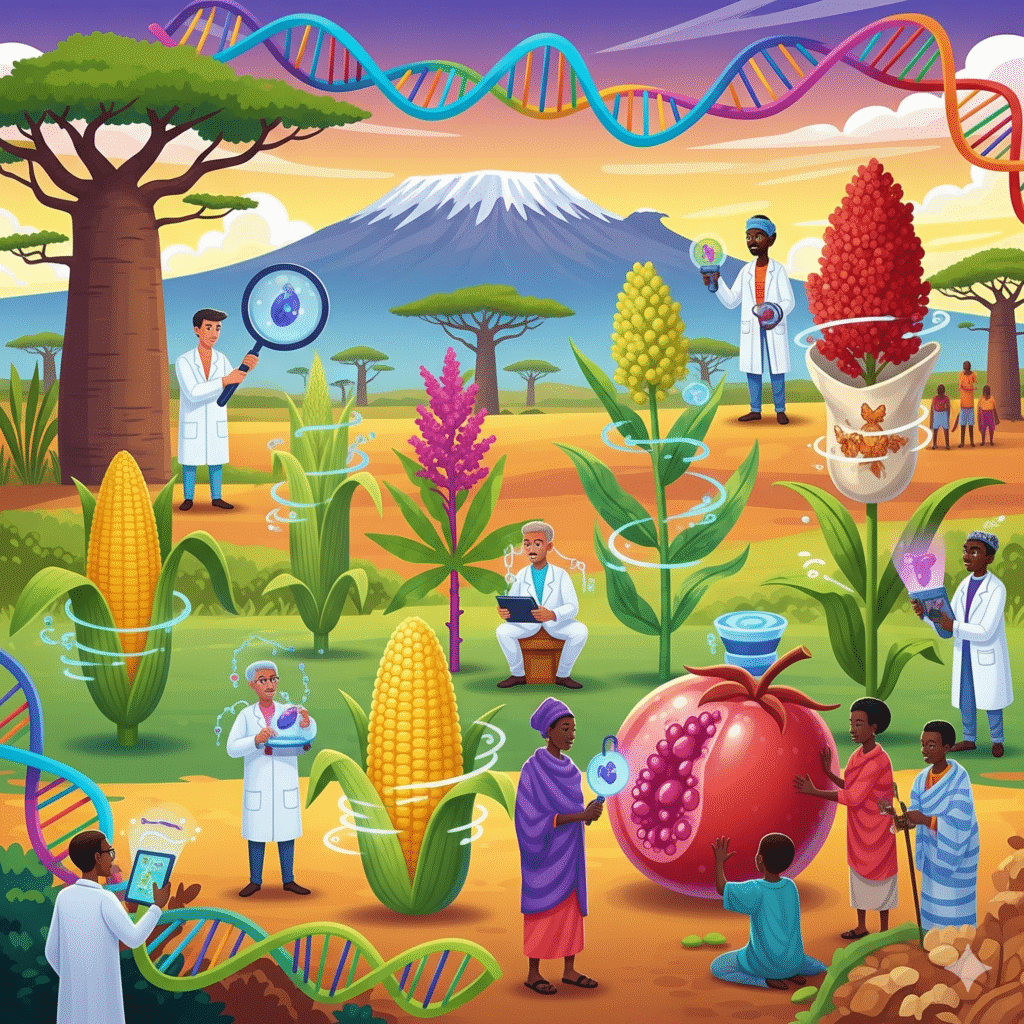
For example, gene editing offers a more precise and efficient approach compared to GMOs or traditional breeding, enabling the development of crops with targeted traits such as drought tolerance, pest resistance, or enhanced nutritional content. Similarly, AI facilitates high-throughput phenotyping, functional gene analysis, and the processing of extensive environmental datasets, revolutionising agricultural decision-making by transforming fragmented market and field information into systematic, data-driven breeding strategies.
By combining these tools, agriculture can move towards a more resilient and sustainable future, where innovation directly addresses the pressing challenges of productivity, climate adaptation, and nutrition.
Agriculture doesn’t operate in a vacuum. How should governments, regional bodies, and research institutions collaborate to create enabling environments for climate-resilient and fortified crops?
A Pan-African agricultural policy should adopt a whole-of-government approach that considers regional challenges while aligning with national agricultural innovations. Such a policy must address the concerns of smallholder farmers, integrate them into domestic and regional markets, and ultimately graduate them into global value chains. Scaling up innovation will be critical, particularly through the introduction of locally relevant agricultural technologies that enhance climate resilience, improve incomes, and strengthen rural livelihoods.
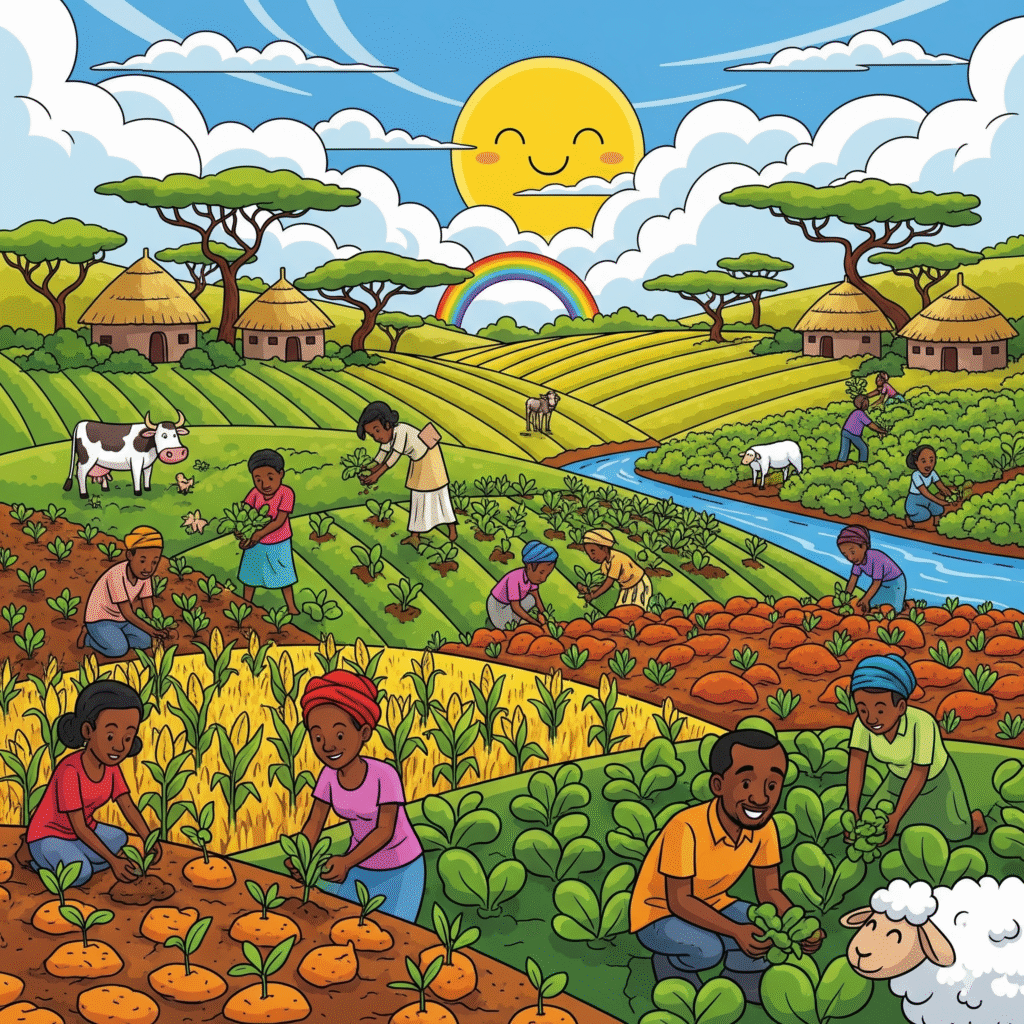
This requires policies that are regionally coordinated yet locally informed. For instance, climate-resilient measures that succeed in one locality may not seamlessly translate to other regions with different soils, climates, or market structures. The success of each initiative often hinges on adequate funding, technical expertise, and sustained policy support, resources that may not always be available at scale. To overcome these barriers, policymakers must design robust replication strategies that account for local variations. This includes adapting extension materials, maintaining flexible budgets to address unforeseen challenges, and establishing continuous feedback loops with local stakeholders to iteratively refine methodologies.
At the same time, global advocacy for climate-resilient technologies often fails to align with regional or national realities. While this misalignment complicates implementation, it can also create opportunities for cross-sectoral innovation, provided that solutions are tailored to Pan-African policy frameworks grounded in inclusive stakeholder engagement. Strong national government advocacy, coupled with active involvement of farmers and scientists, will be vital to ensuring that innovation meets real needs on the ground.
Partnerships between public agencies, private firms, and community organizations will further strengthen this agenda. By pooling resources, fostering technological breakthroughs, and opening new market niches for climate-resilient commodities, such collaborations can accelerate the transition toward a more sustainable and resilient African agricultural system
Beyond yield metrics, what indicators—economic, nutritional, and social—do you use to gauge the success of your interventions?
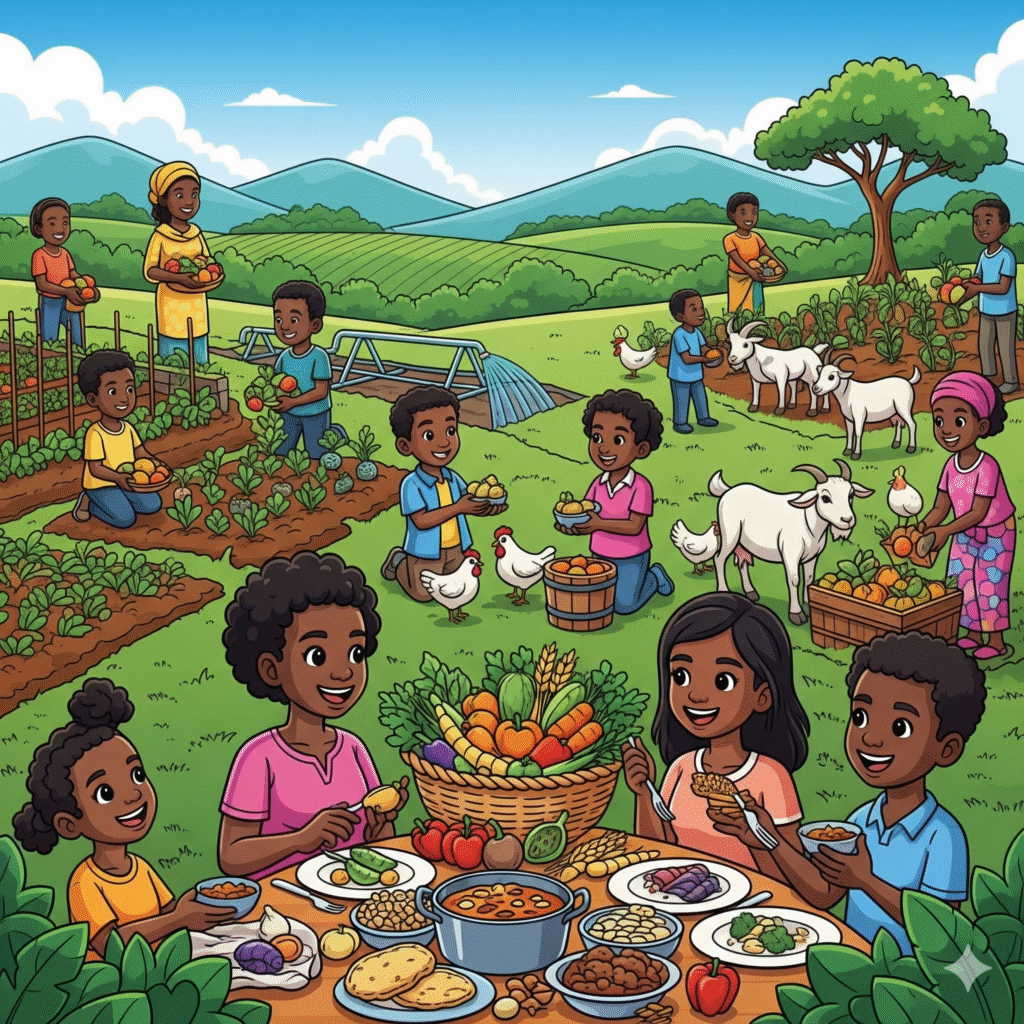
The lack of harmonised indicators or metrics in monitoring and evaluation (M&E) frameworks, whether for measuring economic, nutritional, or social impacts, often makes it difficult to track the effective implementation of new agricultural technology programmes. Indicators should therefore be prioritised and remain flexible, adapting to the development stage of each project as well as the information needs of stakeholders.
For instance, biofortification programmes evolve through different implementation stages, from the breeding phase to the introduction of biofortified crops and eventually to scaling. Along this pathway, the focus of indicators typically shifts: early stages emphasize programme outputs, while later stages assess outcomes and impacts, requiring different sets of factors to be considered. The number and type of indicators may also change over time, with the scaling phase demanding cost-efficient prioritisation of M&E activities tailored to the specific technology.
Further research is needed to test, revise, and develop mechanisms that harmonise M&E frameworks across programmes, institutions, countries, and regions. Such harmonisation will be crucial in ensuring comparability, improving accountability, and guiding evidence-based decisions to maximise the impact of agricultural innovations.
Is there a particular farmer, community, or moment in the field that has crystallised the importance of your work?
Yes, there have been several moments in the field that crystallised the importance of my work, particularly during my research on GMOs across multiple African countries. In conversations with farmers, a recurring theme was their strong desire to be included in the decision-making and development processes of new crop technologies. Many emphasized the importance of prioritising their local cultivars and varieties, which are deeply tied to their cultural practices, diets, and resilience strategies.

This reinforced to me that for new technologies to succeed, whether GMOs or other innovations, they must not be imposed from the top down but rather built upon what farmers already know and value. Farmers repeatedly reminded me that adoption, scaling, and diffusion of new crop varieties can only occur when technologies are relevant to their realities.
In many cases, farmers expressed gratitude that a scientist like myself was actively voicing these concerns on their behalf. Too often, their perspectives are overlooked, sometimes due to external pressures from governments, donors, or private sector interests. These field experiences crystallised my conviction that inclusive engagement, farmer participation, and respect for local varieties are not just desirable, but essential if agricultural innovations are to be impactful and sustainable in Africa.
What lessons from Nigeria’s agricultural transformation can be exported to other African nations facing similar climate and nutrition challenges?
One of the key lessons from Nigeria’s agricultural transformation that can be exported to other African nations is the deliberate focus on empowering youth and women in agriculture. By providing targeted support to these groups, Nigeria has sought to boost productivity, enhance agribusiness opportunities, and in turn contribute not only to economic growth but also to improved livelihoods at the household level.
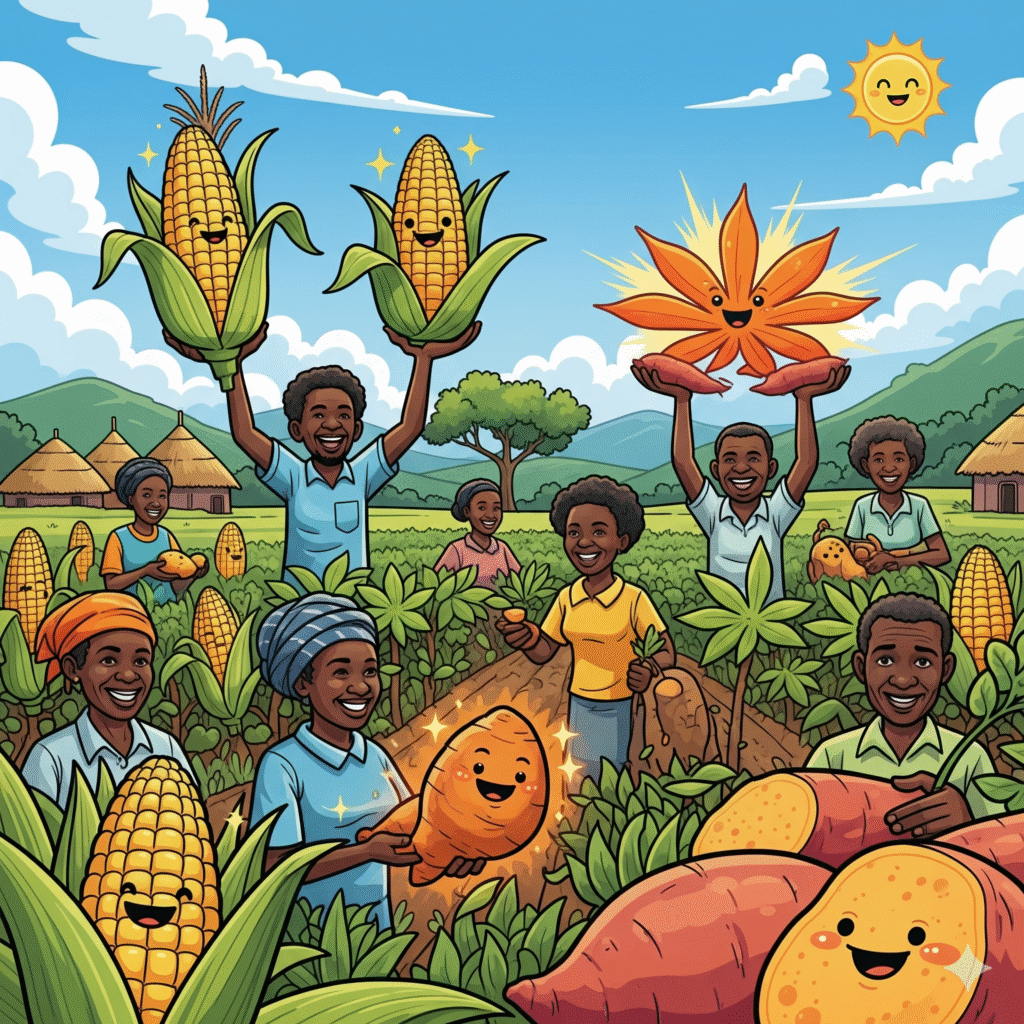
Another important lesson is Nigeria’s investment in research and development programmes aimed at tackling climate and nutrition challenges simultaneously. For example, significant efforts have been made in developing and promoting biofortified crops such as cassava, millet, maize, and sweet potato to address widespread micronutrient deficiencies-a pressing public health challenge across the continent. With government and partner support, the inclusion of biofortified foods in traditional school meal programmes has already led to measurable improvements in vitamin A, zinc, and iron intake among children.
In addition, Nigeria is investing in the development of drought-tolerant crop varieties that are resilient to the impacts of climate change. These efforts underscore the importance of adapting agricultural research to local contexts and prioritising varieties that are culturally acceptable and widely consumed.
However, an important lesson for Africa as a whole is that innovation alone is not sufficient. Scaling and adoption require parallel investments in educational campaigns, improved supply chains, and the creation of demand for both biofortified and climate-resilient crops. By aligning research with farmer needs, strengthening awareness, and ensuring access, African nations can accelerate adoption and diffusion of agricultural innovations that improve nutrition, build resilience, and drive inclusive growth.
The MS Swaminathan Award connects agriculture with peace. How do you see secure, nutritious, and climate-resilient food systems contributing to social stability in Africa?
The M S Swaminathan Award rightly highlights the nexus between agriculture and peace, and I firmly believe that secure, nutritious, and climate-resilient food systems are foundational to social stability in Africa. The impacts of climate change on agriculture in the Global South, and Africa in particular, are both direct and insidious. Major staples such as wheat, maize, and rice are being undermined by shifting rainfall patterns, rising temperatures, and the growing frequency of extreme weather events. These stresses not only reduce yields but also lower micronutrient content, such as zinc and iron, intensifying a public health crisis in regions already burdened by malnutrition.
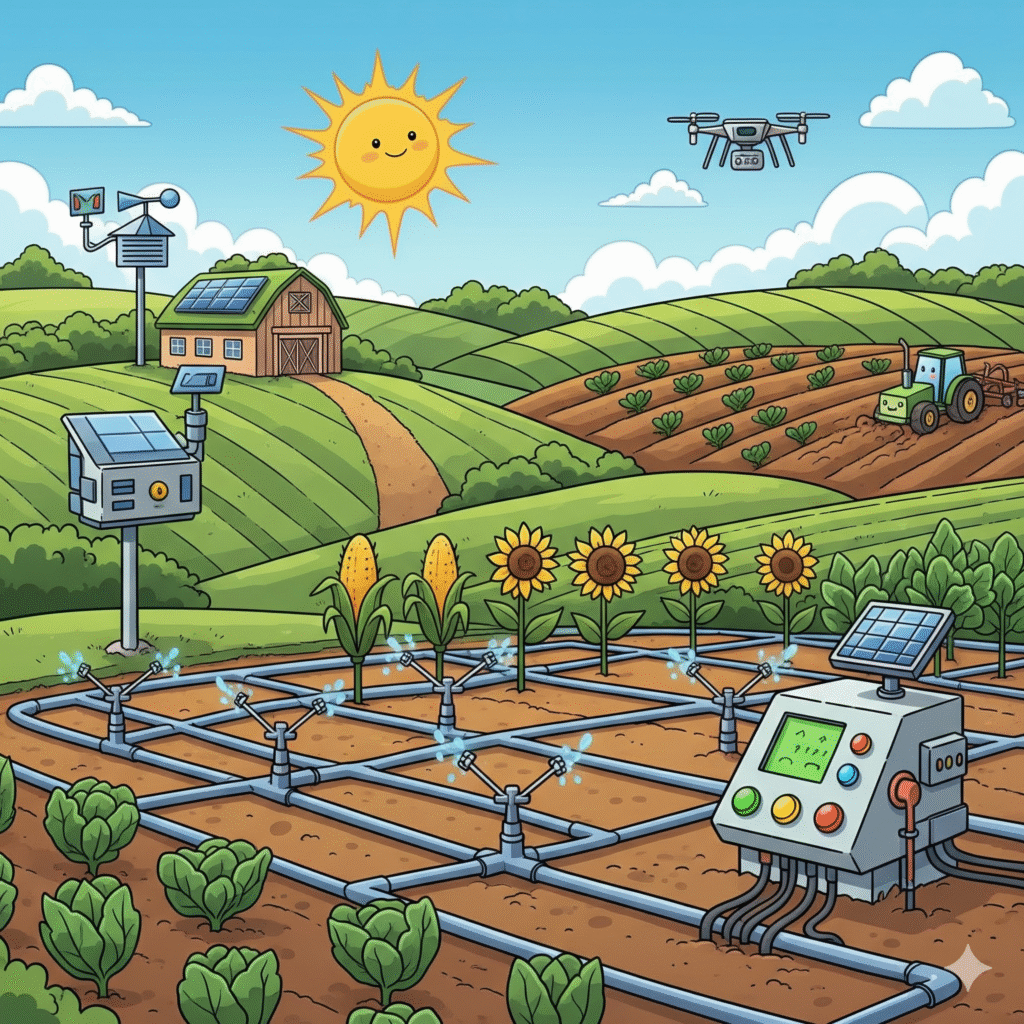
The vulnerability of Africa’s food systems is further exposed by global interdependencies. For example, droughts across the developing world and the Russia-Ukraine war have disrupted grain supplies and destabilised both local and global markets. The resulting food shortages, combined with price spikes, have already fueled social unrest in several African countries, underscoring the link between food insecurity and instability.
To overcome these challenges, Africa must prioritise both adaptation and mitigation strategies. This includes pursuing bold policies that accelerate the development and adoption of climate-resilient crop varieties tailored to smallholder farmers; investing in smart irrigation and climate-smart farming practices; and putting in place long-term agricultural policies that reduce dependency on imported staples by encouraging the cultivation of locally adaptable crops. Equally important is government support for capacity-building, rural road networks, and modern storage facilities to strengthen supply chains and reduce post-harvest losses.
By creating food systems that are secure, nutritious, and resilient, Africa can not only safeguard public health and improve livelihoods but also prevent hunger-driven unrest and contribute to lasting peace and stability across the continent
—– Suchetana Choudhury (suchetana.choudhuri@agrospectrumindia.com )